Totem
an app to enhance lucid dreaming
Totem
an app to enhance lucid dreaming
Lucid dreams are those in which the dreamer is concious of its state and therefore can control the dream. Although there is much skepticism around this matter, it's not impossible. Some training is needed, and this app provides it.
To successfully have a lucid dream, there are three matters to take into account. The first one is that one dreams during the rem phase, so knowing when the user is in this state will help. The second is having a daily dream journal to remember the dreams. The last one is building a checking "reality" habit while awake, this means that when the user reality checks while dreaming, the lucid dream will become accessible.
Lucid dreams are those in which the dreamer is concious of its state and therefore can control the dream. Although there is much skepticism around this matter, it's not impossible. Some training is needed, and this app provides it.
To successfully have a lucid dream, there are three matters to take into account. The first one is that one dreams during the rem phase, so knowing when the user is in this state will help. The second is having a daily dream journal to remember the dreams. The last one is building a checking "reality" habit while awake, this means that when the user reality checks while dreaming, the lucid dream will become accessible.
rem phase
+
dream diary
+
reality checks

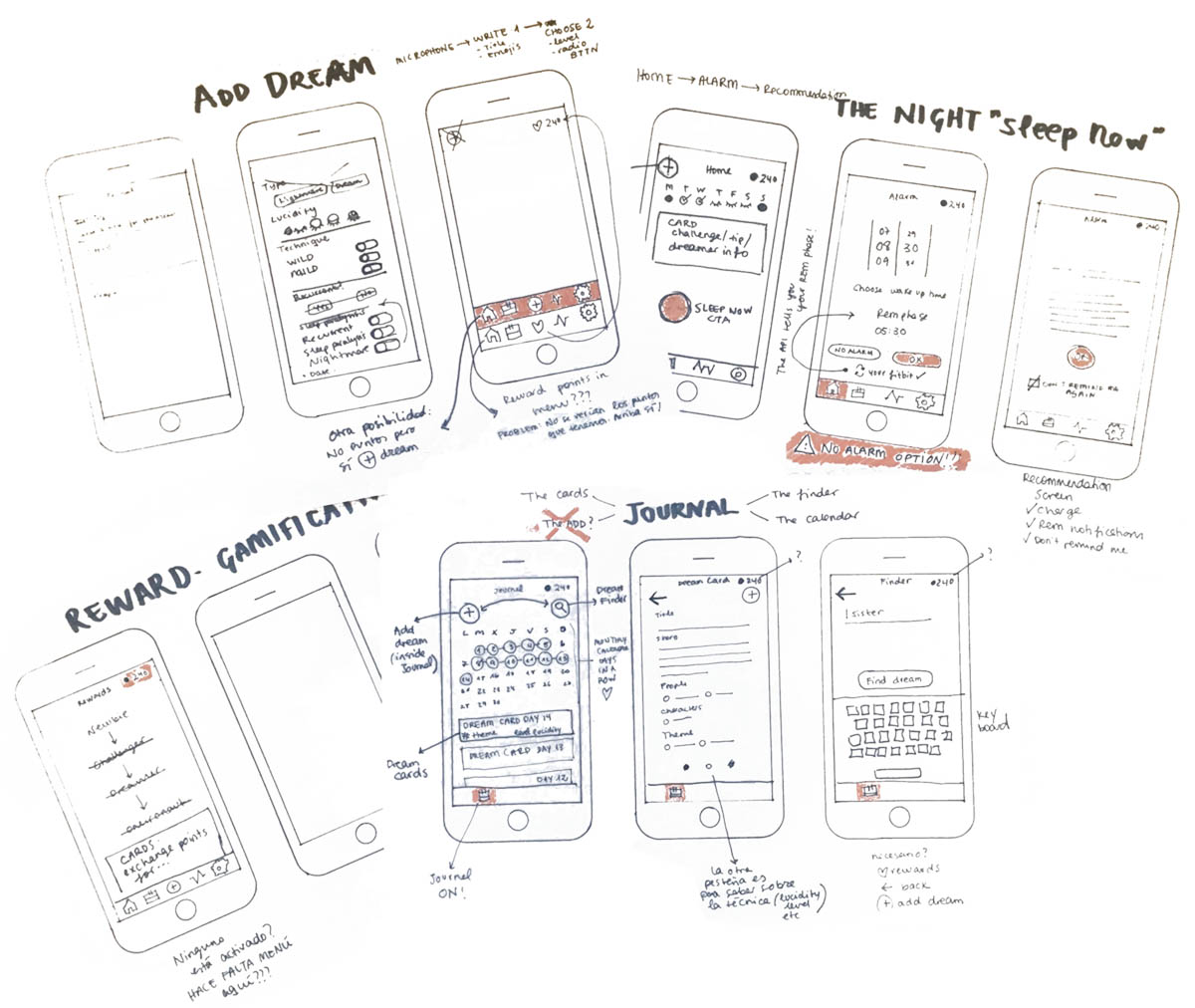
During the research, the benchmarking and heuristics showed that other lucid dreaming apps had the "reality check" feature with push notifications and the dream journal but none of them had access to the users rem phase. Modern wearables and sleep apps offer a sleep analysis showing the different phases, so by sharing the data with an API, detecting the rem phase would be possible.
During the research, the benchmarking and heuristics showed that other lucid dreaming apps had the "reality check" feature with push notifications and the dream journal but none of them had access to the users rem phase. Modern wearables and sleep apps offer a sleep analysis showing the different phases, so by sharing the data with an API, detecting the rem phase would be possible.
To get to know the user, a quantitative survey was carried out. After sharing it in the niche market forums as well as reddit, almost 400 users had completed it, showing that the main user is under 30, male, uses the FILD (reality check) technique and has lucid dreams to enhance creativity.
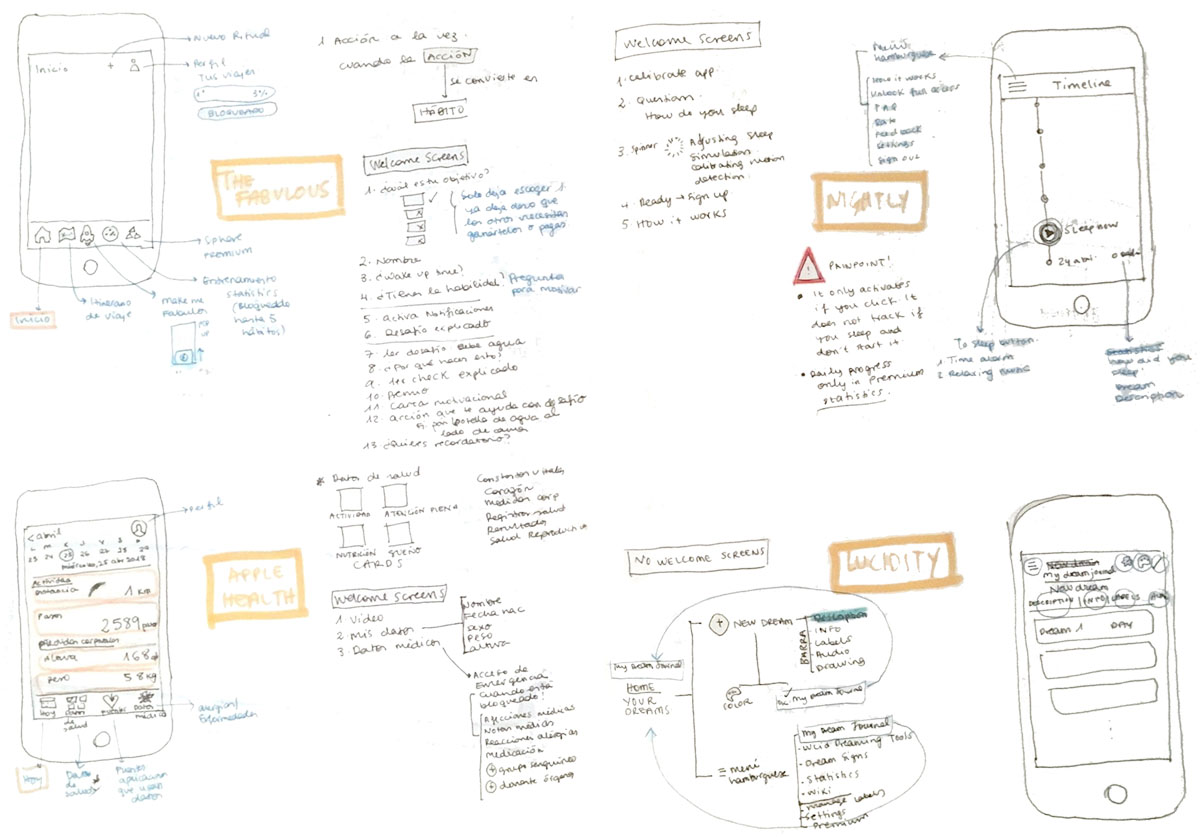

The qualitative interview was answered by almost 100 users. This second survey asked about personal motivations and frustrations. It was key to get to know the user in order to build a habit building product.
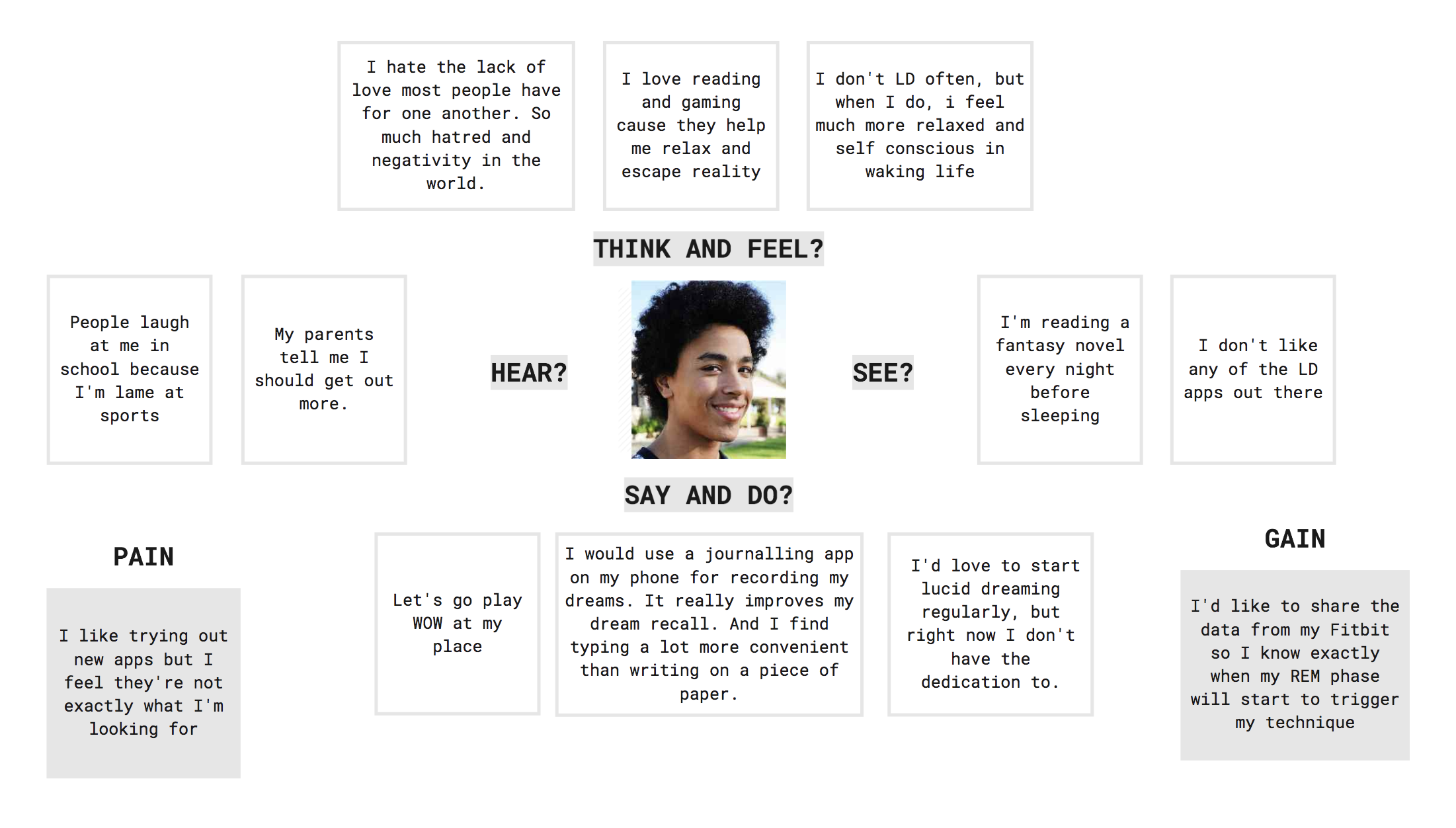
After defining the user with a persona, an empathy map and a customer journey, it was clear that an engaging feature was needed to boost the habit building: gamification. With a reward system, the user would gain points by using the app daily and later spending them in key partners services.
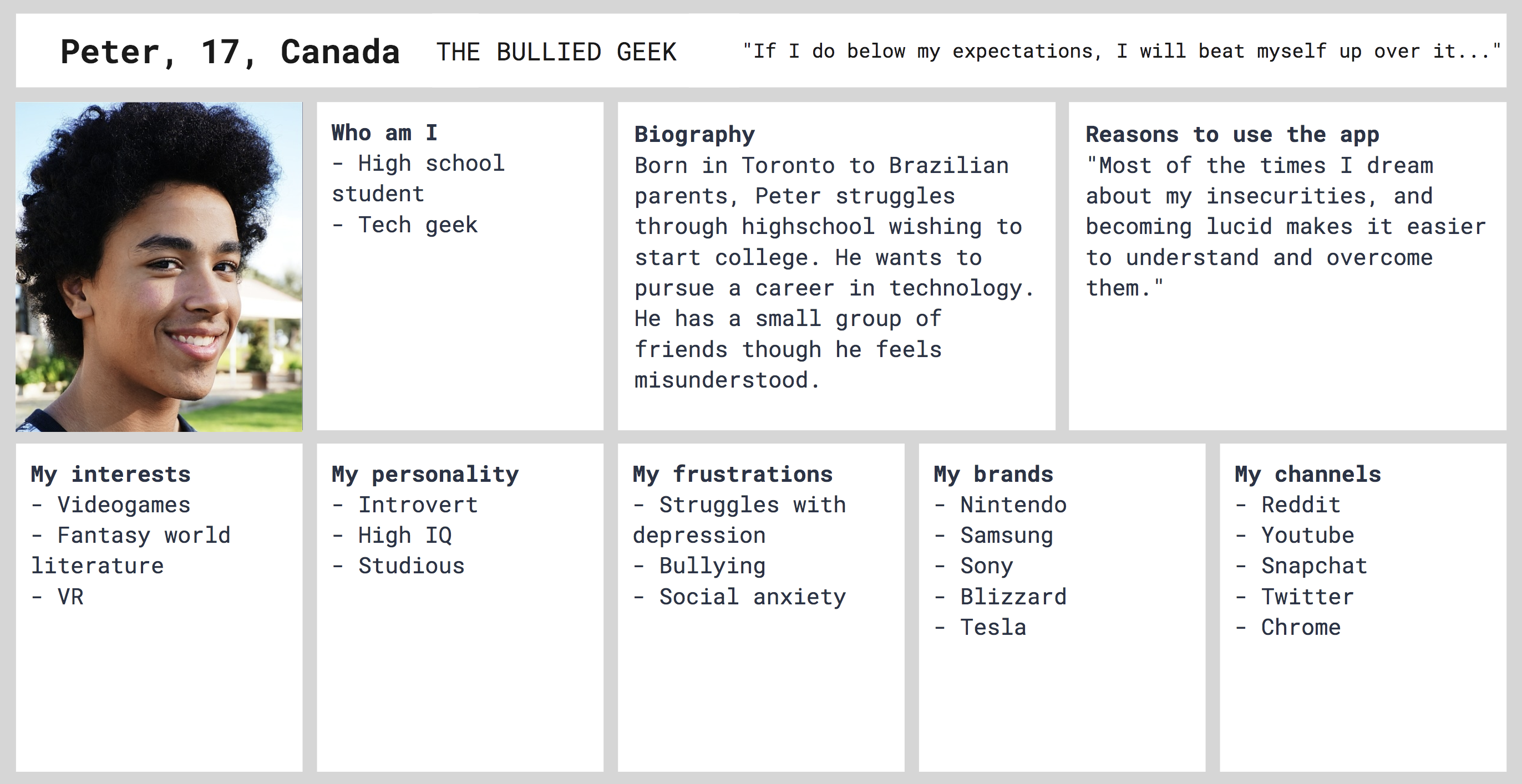
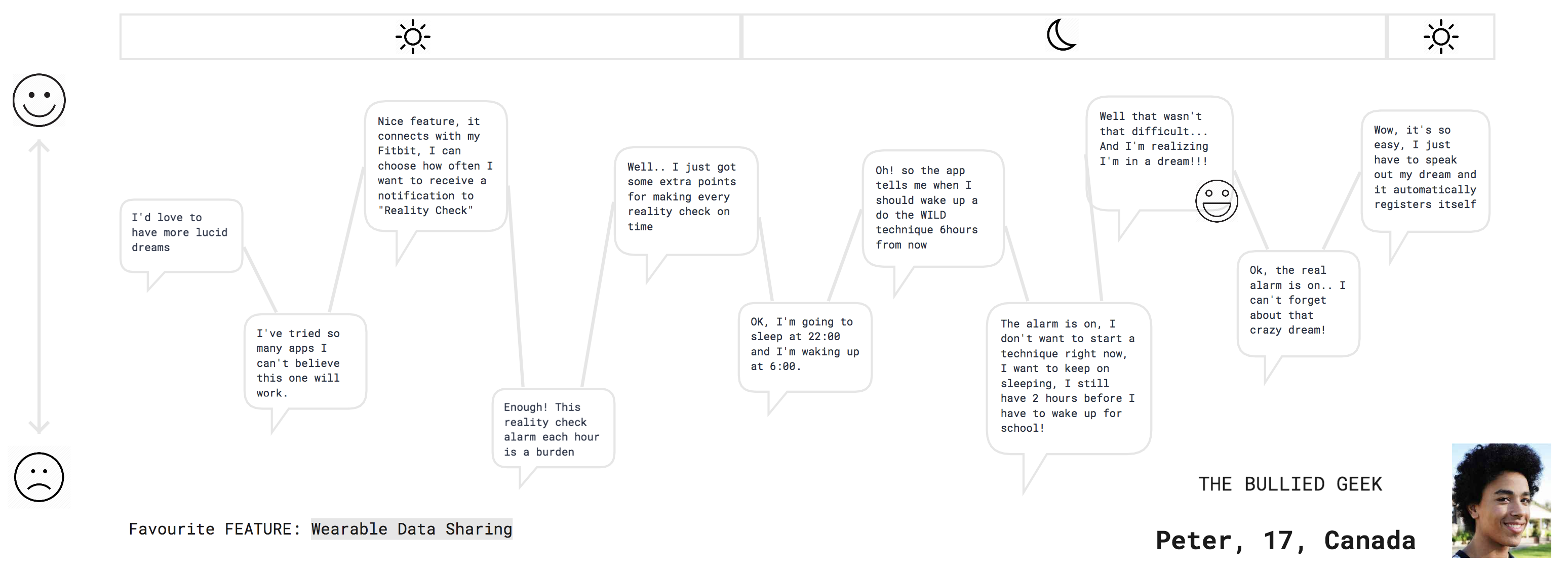

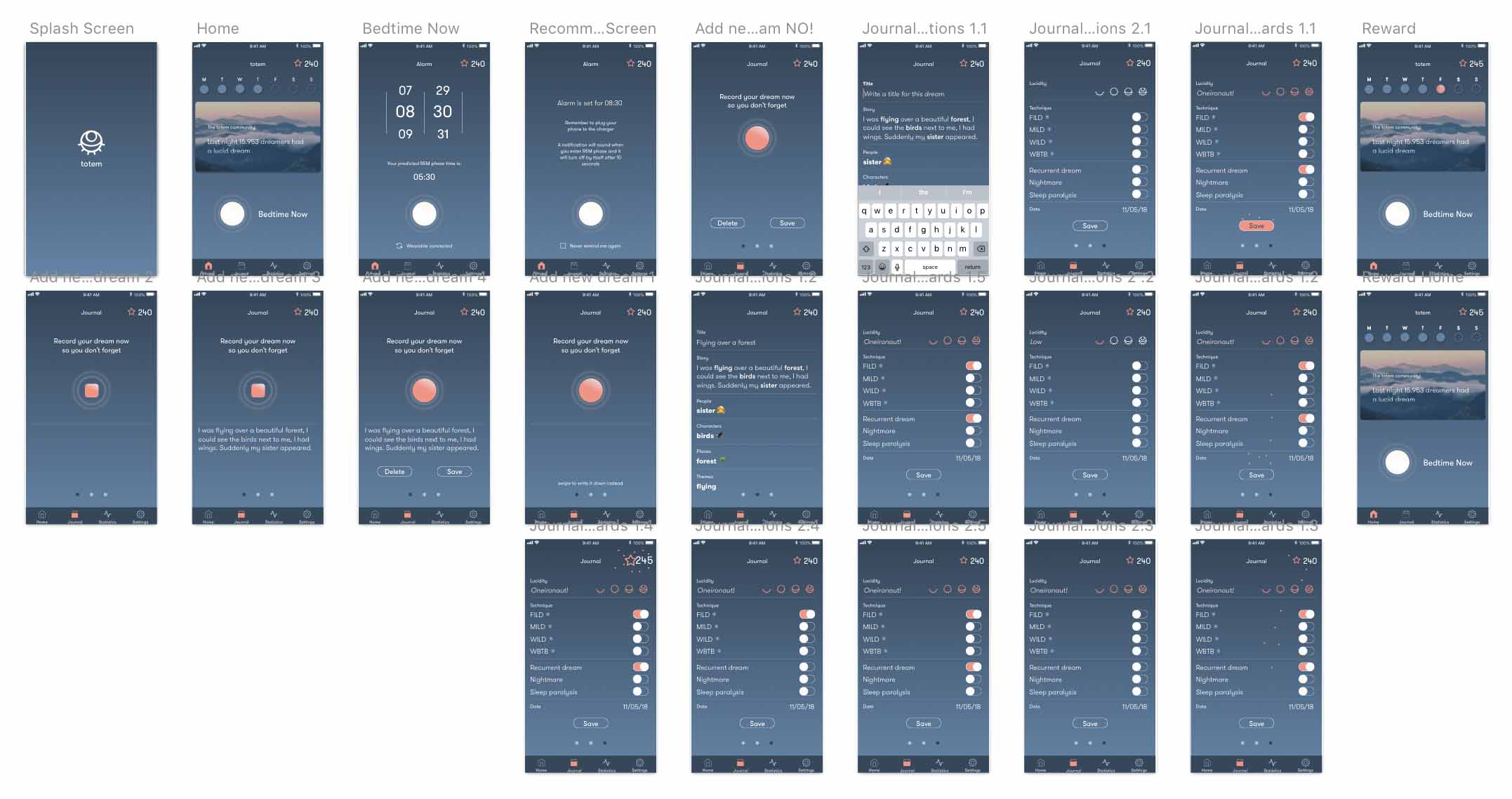
The MVP flow starts when the user goes to sleep, after enabling the microphone for the recordind dream journal, the wearable data sharing for the rem phase detection in an onboarding process. The dream journal feature works with tags and emojis such as characters, places or actions to build statistical exportable data.
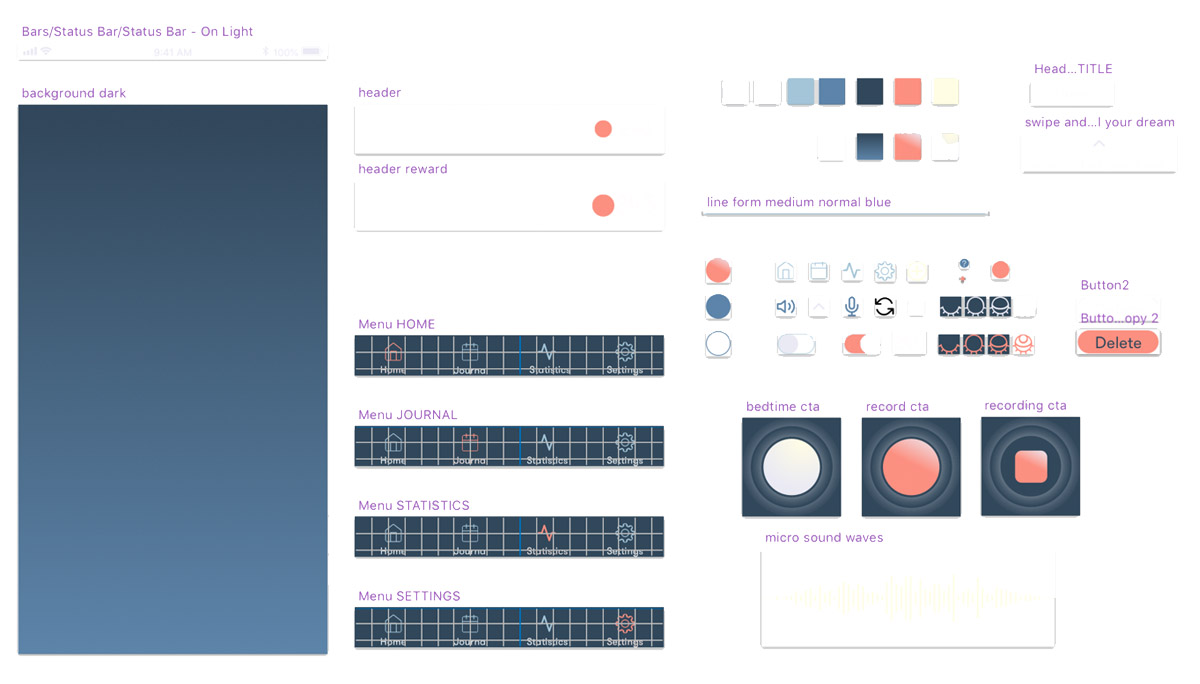
The branding required a dark theme overall look as well as an atomic design system with distinguishable icons.
After building the first prototype, a user testing was held, allowing to detect hotspots and misuses.
